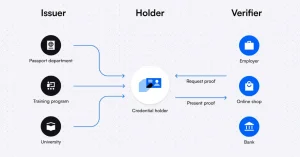
Let’s be honest—running an e-commerce business is like juggling flaming torches while riding a unicycle. Between inventory, shipping, and customer service, the last thing you want is accounting chaos. That’s where accounting software integrations come in. They’re the backstage crew that keeps your financial show running smoothly.
Why E-Commerce Businesses Need Accounting Integrations
Imagine manually entering every sale, refund, or shipping cost into your accounting software. Sounds like a nightmare, right? Integrations automate this drudgery, syncing data between your e-commerce platform (Shopify, WooCommerce, etc.) and accounting tools (QuickBooks, Xero, etc.). Here’s why they’re non-negotiable:
- Time savings: No more copy-pasting spreadsheets at midnight.
- Accuracy: Fewer human errors mean cleaner books.
- Real-time insights: Know your profit margins before your morning coffee.
- Tax compliance: Automatically track sales tax across states or countries.
Top Accounting Software Integrations for E-Commerce
Not all integrations are created equal. Here’s a breakdown of the heavy hitters:
1. QuickBooks + Shopify
The classic combo. QuickBooks’ Shopify integration syncs orders, fees, and payouts seamlessly. It even categorizes transactions by product type—handy for spotting your best-sellers.
2. Xero + WooCommerce
Xero’s clean interface pairs perfectly with WooCommerce’s flexibility. The integration handles multi-currency transactions like a pro—ideal for global stores.
3. FreshBooks + BigCommerce
FreshBooks shines for service-based e-commerce businesses. Its BigCommerce integration tracks project expenses alongside product sales, giving you a 360-degree financial view.
Niche Integrations You Might Not Know About
Beyond the big names, some hidden gems solve specific pain points:
- A2X for Amazon Sellers: Splits Amazon’s lump-sum deposits into individual orders in QuickBooks or Xero.
- TaxJar: Automates sales tax calculations and filings across 11,000+ jurisdictions.
- DEAR Systems: Combines inventory management with accounting—perfect for complex supply chains.
Common Integration Pitfalls (And How to Avoid Them)
Even the best tools can stumble. Watch out for:
- Duplicate transactions: Caused by overlapping syncs. Fix: Set clear sync schedules.
- Misclassified expenses: Shipping fees marked as “office supplies.” Fix: Customize your chart of accounts.
- Timezone mismatches: Sales dated wrong in your accounting software. Fix: Align timezone settings upfront.
The Future: AI-Powered Accounting Integrations
AI is creeping into accounting tools, and it’s a game-changer. Imagine software that:
- Predicts cash flow crunches before they happen
- Auto-categorizes expenses based on past behavior
- Flags unusual transactions (like sudden spikes in refunds)
Tools like Zeni and Botkeeper already offer these features—just don’t expect them to replace your accountant entirely. Yet.
Choosing the Right Integration for Your Business
Here’s the deal: the “best” integration depends on your workflow. Ask yourself:
- Do you sell globally? (Prioritize multi-currency support)
- Are you drowning in inventory? (Look for COGS tracking)
- Do you hate manual reconciliations? (Seek real-time syncing)
Most platforms offer free trials—test drive a few before committing.
At the end of the day, accounting integrations aren’t just about numbers. They’re about reclaiming time to focus on what really matters: growing your business. Because let’s face it—you’d rather be brainstorming your next product than wrestling with spreadsheets.



